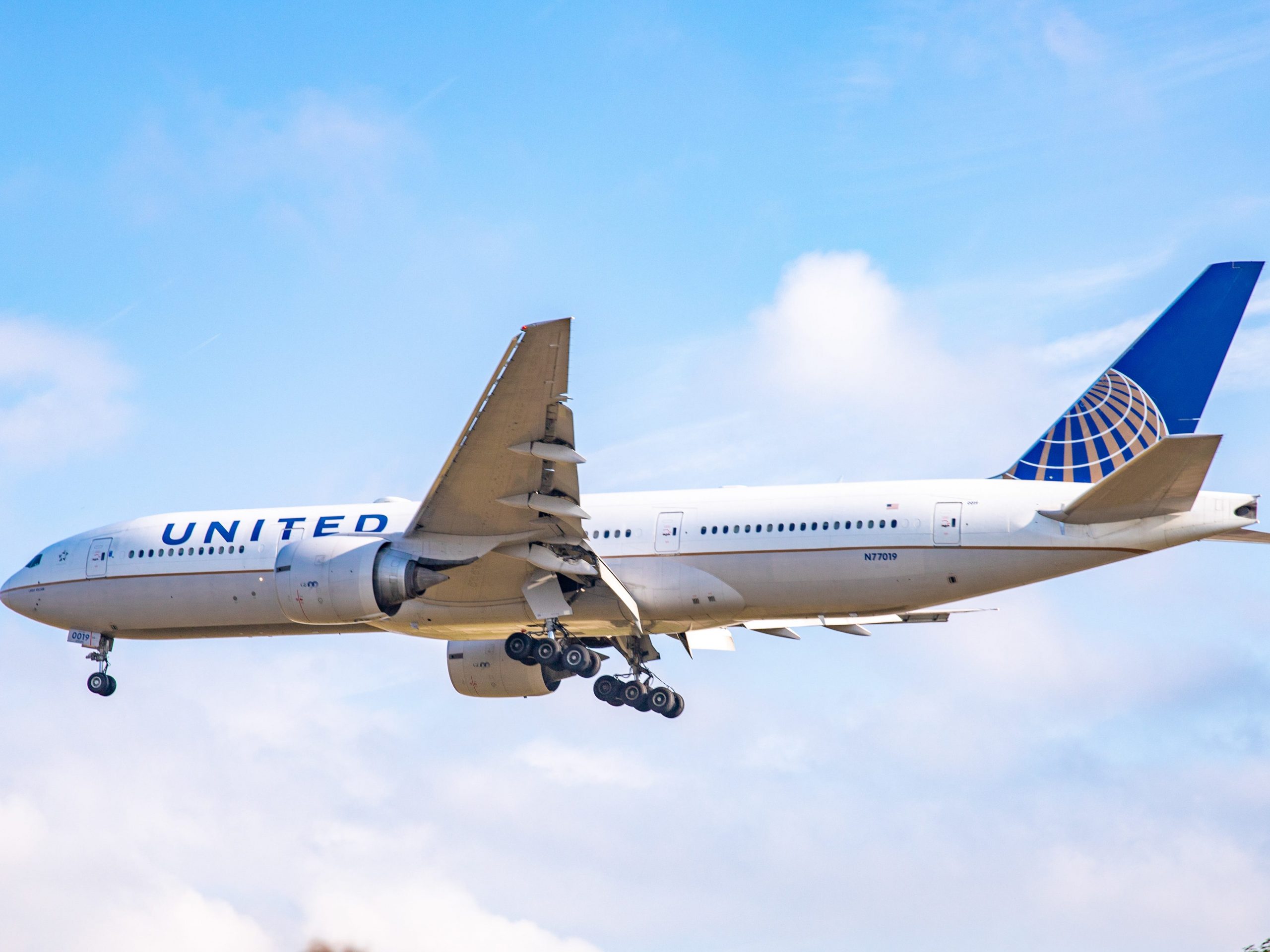
Nicolas Economou/NurPhoto/Getty Images
- United Airlines flight 328 landed safely after experiencing an engine failure over Denver over the weekend.
- Even if the engine failure had occurred over water while en route to Hawaii, the aircraft likely could have landed safely.
- Wide-body aircraft like the Boeing 777 are rated to fly for more than five hours on a single engine.
- Visit the Business section of Insider for more stories.
A United Airlines flight from Denver to Honolulu successfully executed a safe emergency landing on Saturday after suffering an fiery engine failure shortly after takeoff.
Though debris spewed across Denver suburbs, the aircraft was able to quickly turn around and land back at Denver International Airport with no injuries or lives lost.
The entire ordeal lasted less than 30 minutes since the failure occurred just miles from a major international airport. But as this aircraft was heading to Hawaii, there was a possibility that the aircraft could have lost its engine while flying high over the Pacific Ocean – with the nearest airport potentially hundreds of miles away.
It’s a scenario that regulators have feared since the beginning of the jet age. The guiding theory was that having more engines on a plane would help airliners make it to the nearest airport in the event of a failure. Three and four-engine planes like the Boeing 747, Douglas DC-8, and Lockheed L-1011, among numerous others, ruled oceanic skies for exactly that reason.
Regulators eventually created Extended-range Twin-engine Operations Performance Standards, or ETOPS, where twin-engine aircraft could cross oceans. Aircraft only had to stay within a certain flight time from the nearest suitable airport in case an emergency landing was required.
The Boeing 777-200, the plane in question in the incident over the weekend, can fly over five hours with just one engine thanks to its 330-minute ETOPS certification. That's around the flight time from Los Angeles to Honolulu.
When flying over the Atlantic between North America and Europe, diversion airports along the way typically include Keflavik Airport in Iceland, Gander International Airport in Canada, and Narsarsuaq Airport in Greenland. But flights to Hawaii from the mainland US often have no intermediate airports along the route, leaving pilots with two options: return to the mainland or continue to Hawaii.
"The decisions that the crew would have to make would be based on the location of the aircraft," Henry Harteveldt, founder of travel research company Atmosphere Research Group, told Insider. "Has it reached the halfway point between the mainland and Hawaii? If it had not, chances are it would return back to the mainland and land at the closest available airport that could accommodate the 777."
Overwater flights are dispatched with ETOPS requirements in mind to ensure that a diversion airport is always within reach, assuming that the engine failure or shut down doesn't lead to other problems with the aircraft.
San Francisco International, Los Angeles International, and San Diego International, to name just a few, are possible diversion airports if the aircraft have to return to the mainland. But if past the halfway point, pilots might decide to press forward to Hawaii and may even determine they can land at the intended destination airport.
An aircraft flying from Denver to Honolulu, for example, wouldn't operate unless that aircraft could fly to a diversion airport with one engine at any stage of the flight, whether over Colorado suburbs or the mid-point between the mainland and Hawaii.
A new generation of aircraft based on ETOPS
Fears of an overwater engine failure on a twin-engine jet hindered the development of the segment for decades. True innovations with two-engine aircraft only came about once aviation regulators introduced ETOPS in the 1980s and manufacturers started to build larger twin-engine jets like the Boeing 777, Airbus A350 XWB, and Boeing 787 Dreamliner.
Those aircraft are now replacing the costlier quad-engine aircraft like the Boeing 747 and Airbus A380, with new types like the Boeing 777X currently in development. Twin-engine aircraft now operate the longest flights in the world, including the latest New York City-Singapore route that's operated by an Airbus A350-900ULR.
And it's not only twin-engine wide-body aircraft that can use ETOPS as smaller aircraft like the Boeing 737 and Airbus A320 families can get the certification. Flights from the mainland US to Hawaii are frequently operated by narrow-body aircraft and some airlines use them to fly between North America and Europe under ETOPS rules.
"The certification for these planes to operate over water has been rigorous, and it's been going on since 1985," Harteveldt said.
Harteveldt was working for Trans World Airlines, commonly known as TWA, when the Boeing 767 received ETOPS certification that allowed it to fly as far as 60 minutes from the nearest alternate airport. Those limits were gradually increased, allowing airlines to fly more direct routes instead of focusing on staying close to land.
United's experience with flying over water with one engine
An overwater engine shut down isn't within precedent as a United Airlines Boeing 777-200 flying from Auckland, New Zealand to Los Angeles in 2003 was forced to shut down one engine while over the Pacific and divert to land, according to FlightGlobal. The nearest airport in Kona, Hawaii ended up being over three hours away, technically over the 180-minute requirement for the 777 at the time. Still, the aircraft was able to land safely after around 190 minutes from the engine shutdown.
Another United Boeing 777 flight from San Francisco to Honolulu in February 2018 was forced to shut down an engine after an issue with the Pratt & Whitney PW4000-112 engine, according to a National Transportation Safety Board report, and managed to make it to the destination airport on one engine.
Harteveldt noted, however, that the loss of the engine nacelle, or the covering that houses the engine, on flight 328 may have adversely impacted the aircraft's range and limited the diversion airports available for landing. It was also revealed that a piece of the engine did in fact puncture the fuselage and may have contributed to an even greater loss of aerodynamics that may have reduced its range, even more, according to Harteveldt.
